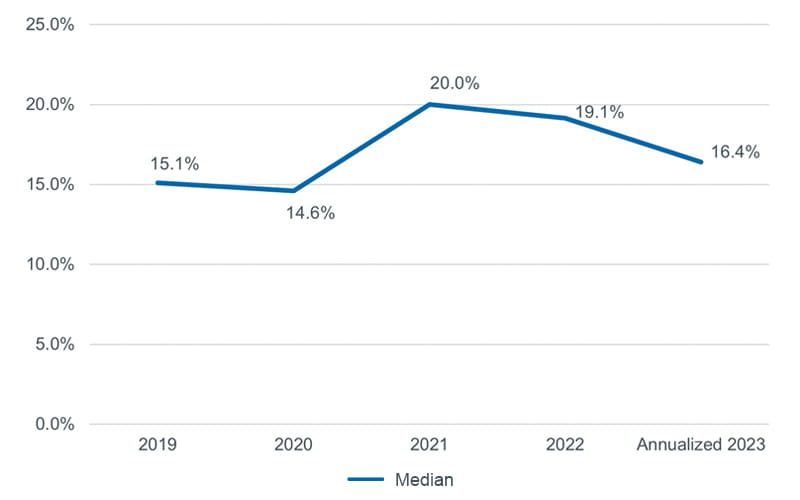The pandemic exacerbated a problem that was already prevalent among health care organizations: caregiver burnout and turnover. In the intervening years, hospital leaders have expended enormous efforts to stabilize the workforce.
Data suggests these efforts have had an effect. Children’s hospital workforce metrics are improving, with key data points like turnover and full-time equivalent (FTE) positions per adjusted occupied bed (AOB) trending closer to pre-pandemic levels. However, the return to normal staffing levels comes at a cost.
“Across the board, hospital expenses are growing faster than reimbursement rates,” says Kory Kittle, vice president of analytics for Children’s Hospital Association (CHA).
According to statistics from the American Hospital Association, contract labor usage, staffing model changes to address work force shortages, and wage increases accounted for 20% of growth in overall hospital expenses between 2020 and 2023. Kittle says CHA’s financial and operational data program PROSPECT shows similar trends.
For example, PROSPECT data shows the number of FTEs per AOB are at or below pre-pandemic levels, but children’s hospitals are paying 26% more in wages and agency expenses to maintain staffing levels.
Children’s hospitals’ turnover rates, which peaked at 19.7% in 2021, decreased to 17.6% from July 2022 through June 2023, a year-over-year decrease of 16.6%. However, children’s hospitals’ overall turnover rate remains 10% higher than pre-pandemic levels.

Hard-to-fill positions, especially in intensive care units, emergency departments, and operating rooms, continue to drive the use of contract labor. In 2023, children’s hospitals saw a 38% higher open requisitions rate compared to 2019.
A limited pool of qualified caregivers has forced hospitals to pay a higher median wage rate to contract staffing firms. Contract labor costs increased by 88% between 2019 and 2023. Specifically, the median hourly rate for a contract employee was $67 in 2019; according to PROSPECT data, children’s hospitals paid contract labor $127 per hour in the first half of 2023, accounting for 8.6% of their total salary expenses in that period.

“New nurses and clinicians are joining the workforce, but hospitals continue to use contract employees to supplement higher acuity areas where experience is required,” Kittle says.
These challenges along with other cost increases have caused net operating margins to plummet to a record low. The staffing situation isn’t sustainable for many children’s hospitals. “Most can’t continue to afford these staffing expenses. Hospitals will need to find other ways to enhance their workforce and improve reimbursement to regain financial stability,” Kittle says.
Some hospitals have found ways to manage labor costs, decrease contract employees, and create environments where staff want to stay for the long term:
- How to Reduce Contract Labor
- Retention Strategies: How Two Hospitals Are Adapting to Today's Workforce
- When to Use Incentive Pay
21%
Pediatric Intensive Care Unit (PICU)
11.3%
Medical-Surgical Nursing
10.9%
Neonatal Intensive Care Unit (NICU)



